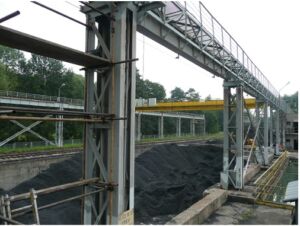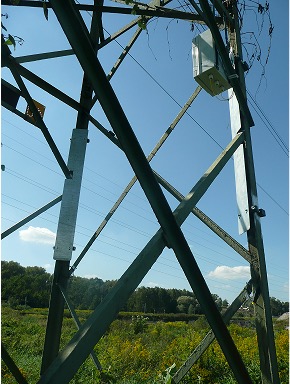Fiber optic
measurement system
Innovative system for measuring deformation and stress of objects and installations, especially critical installations.
Developed by a group of engineers, the innovative measurement system based on fiber optic photonics provides one of the most accurate measurements in the world (1000 measurement points per meter of fiber optic).
Our solution will find application in the energy, aerospace, railroad industries, as well as in the broad field of civil and geotechnical engineering.
In addition, thanks to intrinsic safety, the system can be used in areas where there is a risk of gas and/or combustible dust explosion.
.
Advantages of fiber optic sensors
The advantage of fiber optic sensors is the ability to measure strain and stress in up to 1000 points with the use of an appropriate configuration of measuring devices, using a single single-mode fiber and a recording system with an accuracy of δε = 1µStrain.
The most important issue is that the signal received from the fiber optic sensor is not affected by noise and power losses, because the information about the measured quantity is encoded in the form of a wavelength.
Fiber optic sensors can be used to measure strain, temperature, pressure, weight, displacement, and acceleration. A large selection of fiber optic sensors allows you to place the fiber on virtually any surface, because the sensors can be glued, welded or embedded in concrete or composite.
Projects
Gas pipeline installations
As a result of previous studies and tests, the FBG sensor was selected to measure the change in the deformation of the DN500 gas pipeline on each measuring loop in the amount of 7 measuring points located around the circumference every 45° and one temperature compensation sensor.
Fiber optic sensors that were installed on the perimeter of the transmission operator’s pipeline showed continuity of connection with the interrogator, which proved that the measuring system on the tested facility was intact.
The mounted sensor is an innovation in the oil and gas industry. Thanks to our FBG sensor, you can monitor any deviations and temperature changes on an ongoing basis, of which we are immediately notified.

Close transportation
The tests were carried out on a crane built in 1980. It consisted of two 13-span units composed of plate girder crane beams supported on truss columns. The length of one span was about 12 m.
The tests were carried out based on the use of a special sensor, mounted indirectly in holders specially designed and made for this purpose.
Thanks to our product, the measurement result will allow you to assess the fatigue strength of the joint and the degree of its damage. By following such a scheme in a continuous manner, it is possible to more effectively predict potential places of structural failure, and above all, to present the user of the object in question with the approximate time of its further operation, or indicate the period after which control diagnostic tests should be carried out.


Storage tanks and liquid ammonia transport facilities
A number of foundation piles were selected for the fiber optic measurement system tests
8 pcs. located under the non-pressurized ammonia tank in Police.
Thanks to such an extensive measurement system, changes in the strain and stress values of the stand are immediately captured.

Construction of the supporting 110kV overhead line
The power pole of the 110kV line located in Oświęcim was selected for the tests of the fiber optic measurement system. As a result of the analysis of the supporting structure of the 110kV line, as well as its location in the field, the location of the fiber optic sensors with Bragg gratings was determined.
Fiber optic sensors, which were mounted on four supports (legs) of the 110kV power pole, showed the continuity of the connection. As a result of our analyses, we designed and manufactured holders for fiber optic sensors intended for installation of SC-01 fiber optic sensors on the tested supporting structure of the 110kV pole.
Installed sensors support deflection and tension control.

Cel projektu
Celem projektu jest rozwój technologii światłowodowych w zakresie określenia stanu naprężenia, odkształceń oraz temperatury badanych obiektów. Efektem końcowym prac jest opracowanie i produkcja opatentowanych systemów pomiarowych służących do badania stanu technicznego instalacji. Realizacja projektu podniesie poziom bezpieczeństwa instalacji krytycznych oraz usprawni system nadzoru konstrukcji szczególnego zastosowania.
Zakres realizacji
- Przygotowanie koncepcji czujnika światłowodowego wykorzystującego siatki Bragga.
- Przygotowanie koncepcji czujnika światłowodowego wykorzystującego rozproszenie Rayleigha.
- Zbudowanie prototypu systemu pomiarowego i jego testy na specjalnie przygotowanych mikrostanowiskach.
- Testy na obiektach przemysłowych.
- Wdrożenie gotowych produktów.
Dodatkowe informacje
- Wartość projektu: 5 875 201 zł
- Wartość dofinansowania ze środków NCBR: 4 277 236 zł
Okres realizacji projektu: 05.2018 r. – 04.2021